
producer profile
21.08.2019
Francis Boulard et Fille Producer Profile
<p>Delphine Boulard is the seventh generation to work her family's land in <glossary title="267">Champagne</glossary> and now fully at the helm of the <glossary title="427">estate</glossary> she founded with her father Francis in 2009. Prior to founding Francis Boulard et Fille with Delphine, Francis worked alongside his brother and sister running the now defunct family <glossary title="427">estate</glossary> Raymond Boulard. The winery created a reputation for itself by highlighting the distinct <glossary title="1026">terroirs</glossary> of the three areas it worked: the rich <glossary term="Clay" title="301">clay</glossary> soils of the <glossary title="571">Marne</glossary> planted in <span class="zalup"><span><glossary title="804">Pinot Meunier </glossary><span>and</span></span></span> <span class="zalup"><span><glossary title="271">Chardonnay</glossary><span>,</span></span></span> the <span class="zalup"><span><glossary title="955">silica</glossary><span>-</span></span></span><glossary title="596">limestone</glossary> soils of the <glossary title="637">Massif de Saint-Thierry</glossary> and the <glossary title="805">Pinot Noir</glossary> of <glossary title="619">Mailly</glossary> (the two latter being subsections of the <glossary title="673">Montagne de Reims</glossary>). During his tenure there, Francis was the head <glossary title="1103">viticulturist</glossary> and winemaker. But a fundamental disagreement would lead him to leave it all behind to start his own much smaller <span class="zalup"><span><glossary title="427">estate</glossary><span>.</span></span></span></p>
<p>Francis' career as a <glossary title="1089">vigneron</glossary> dates back to the early 1970's, a period where <glossary term="Conventional Farming" title="331">chemical viticulture</glossary> was only starting to gain traction. Like most in his generation, he began adopting <glossary title="279">chemical </glossary><glossary title="442">fertilizers</glossary>, <glossary title="1142">pesticides</glossary> and <glossary title="526">herbicides</glossary> in his vineyard work. But around 1996, he faced a daunting realization:</p>
<p><em>"As a simple <span class="zalup"><span><glossary title="769"><em>peasant</em></glossary><span>,</span></span></span> I always assumed that the products we were putting on our vines would wash away after a couple of rains, that they would naturally go away. No one ever told us that </em><glossary title="279"><em>chemical</em></glossary><em> residue would not only permanently affect the vineyard, but actually end up in the wine."</em></p>
<p>Francis knew something had to change but wasn't entirely sure what to do. Around this time, a friendly mention of <glossary term="Biodynamic" title="160">biodynamics</glossary> by a colleague would introduce him to <glossary title="882">Rudolph Steiner</glossary>'s philosophies and lead to several years of <glossary title="1103">viticultural</glossary> experimentation. Determined to attempt this type of <glossary title="1103">viticulture</glossary> on his land, Francis convinced his siblings to <glossary term="Conversion" title="332">convert</glossary> one <span class="zalup"><span><glossary title="523">hectare</glossary><span>,</span></span></span> at first to see if it was possible to have healthy vines without using<span class="zalup"><span> <glossary title="279">chemicals</glossary><span>.</span></span></span> This proved a success, so Francis tried something else: intentionally working part of a <glossary title="760">parcel</glossary> <span class="zalup"><span><glossary title="160">biodynamically</glossary><span>,</span></span></span> leaving the rest in <glossary title="331">conventional </glossary><glossary title="279">chemical</glossary> <glossary title="1103">viticulture</glossary> and <glossary title="1104">vinifying</glossary> both separately. Three years in a row, he felt the wine from <glossary title="160">biodynamic</glossary> grapes was more<span class="zalup"><span> <glossary title="431">expressive</glossary><span>.</span></span></span> </p>
<p>Convinced that the entire <glossary title="427">estate</glossary> could and should be <span class="zalup"><span><glossary term="Conversion" title="332">converted</glossary><span>,</span></span></span> Francis proposed this to his brother and sister. His idea was met with heavy resistance and ridicule. After much reflection, Francis decided that he could work no other way: he claimed his three <glossary title="523">hectares</glossary> of vines, broke off from his family and started his own <span class="zalup"><span><glossary title="427">estate</glossary><span>.</span></span></span> His daughter Delphine, who had been working alongside her father at Raymond Boulard for nine years, decided to follow him and together they founded Francis Boulard et Fille in 2009. They work close to three <glossary title="523">hectares</glossary> in the <glossary title="1068">Vallée de la Marne</glossary> and the <glossary title="673">Montagne de Reims</glossary> following <glossary title="746">organic</glossary> and <glossary title="160">biodynamic</glossary> practices. The breakdown of land is essentially a third of what Raymond Boulard used to be in size, with the three distinct <glossary title="1026">terroirs</glossary> still expressed through a smaller, <glossary term="Artisinal" title="122">artisanal</glossary> lens: 1.6 <glossary title="523">hectares</glossary> are in the <span class="zalup"><span><glossary title="637">Massif Saint-Thierry</glossary><span>,</span></span></span> 0.5<glossary term="Hectare" title="523">h</glossary> in <glossary title="619">Mailly</glossary> (both sectors of the <glossary title="673">Montagne de Reims</glossary>) and the 1.2<glossary term="Hectare" title="523">h</glossary> of historic family <glossary title="760">parcels</glossary> in the <span class="zalup"><span><glossary title="1068">Vallée de la Marne</glossary><span>.</span></span></span></p>
<p>Delphine originally had no intention of becoming a <glossary term="Vigneron/Vignaiolo" title="1089">vigneronne</glossary> and had gone to university for interior design. After a few years designing kitchens and bathrooms for large French corporations, she was bored to death and asked Francis if she could come work at Raymond Boulard. Her first year she studied <span class="zalup"><span><glossary title="1103">viticulture</glossary><span>,</span></span></span> then she followed a professional <glossary title="422">oenological</glossary> program and her third year she studied administration and business. During her studies, she was working in the vines every day.</p>
<p>The <glossary term="Estate" title="427">estate</glossary> is <glossary title="260">certified organic </glossary>and worked with <span class="zalup"><span><glossary title="826">biodynamic preparations</glossary><span>,</span></span></span> a rarity in <span class="zalup"><span><glossary title="267">Champagne</glossary><span>.</span></span></span> So much so that large signs had to be installed in the vineyards so that helicopters can see which <glossary term="Plot" title="1133">plots</glossary> to avoid while dumping <glossary title="279">chemical</glossary> products on the vineyards (it may be hard to believe, but this is a common practice in <glossary title="267">Champagne</glossary>; a law passed in the early 2010's forbidding helicopter treatments within 120 meters of <glossary title="746">organic</glossary> vineyards). Of the 400 <glossary title="523">hectares</glossary> planted in the <span class="zalup"><span><glossary title="1068">Vallée de la Marne</glossary><span>,</span></span></span> only 3.2 are <glossary title="260">certified</glossary> <span class="zalup"><span><glossary title="746">organic </glossary><span>(of which the </span></span></span>Boulard own 1.2 <glossary title="523">hectares</glossary>). </p>
<p>Unlike most <glossary title="267">Champagne</glossary> houses, grapes are picked ripe. This produces <glossary title="1110">vins clairs</glossary> closer to "normal" <glossary title="405">dry</glossary> wine (11%), making for <glossary title="267">Champagnes</glossary> that are quite<span class="zalup"><span> <glossary title="1108">vinous</glossary><span>.</span></span></span> In such, <glossary title="403">dosage</glossary> is decided judiciously in measure of each release, though the trend has been less and less or no <glossary title="403">dosage</glossary> whatsoever. </p>
<p>After almost 50 years in the vines, Francis retired in 2017. A dramatic electrical fire in the Boulard <glossary title="254">cellar</glossary> in late 2016, coupled with Francis' retirement led Delphine to build a new edifice alongside her new house. The only major stylistic shift is that Delphine now <glossary title="1104">vinifies</glossary> and ages everything in old <glossary title="210">Burgundian</glossary> <glossary title="142">barrels</glossary> and a few <glossary title="462">foudres</glossary> (Francis had favored <glossary title="388">demi-muids </glossary>along with <glossary title="142">barrels</glossary> of all sizes). </p>
Article
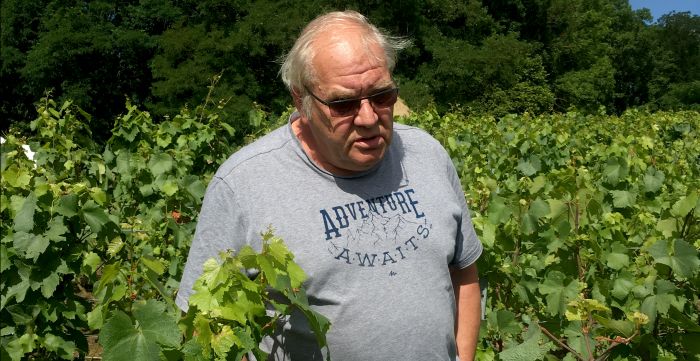
interview
22.05.2019
An Interview with Francis Boulard from 2011
<p><em><strong>This interview with Francis Boulard took place in Bordeaux in June 2011.</strong></em></p>
<p><strong>Your estate is very new but you've been a vigneron for a long time. Can you tell us a bit of your history?</strong><br />
<br />
In 1973, I came home to work with my father in the <span class="zalup"><span><glossary term="Vallée de la Marne" title="1068">Vallée de la Marne</glossary><span>,</span></span></span> an area rich in <glossary term="Clay" title="301">clay</glossary> soils. The <glossary term="Estate" title="427">estate</glossary> was spread out over two regions: three <glossary term="Hectare" title="523">hectares</glossary> in the <glossary term="Vallée de la Marne" title="1068">Vallée de la Marne</glossary> and two <glossary term="Hectare" title="523">hectares</glossary> on the <span class="zalup"><span><glossary term="Silica" title="955">silica</glossary><span>-</span></span></span><glossary term="Limestone" title="596">limestone</glossary> soils of <glossary term="Massif Saint-Thierry" title="637">Massif Saint-Thierry</glossary> (the most Northern point of <glossary term="Champagne" title="267">Champagne</glossary>).<br />
<br />
My brother and sister soon joined my father and I around this time and we started expanding the <glossary term="Estate" title="427">estate</glossary> as a family. We went from five <glossary term="Hectare" title="523">hectares</glossary> in the 1980's to 10 in the 1990's. This consisted of replanting vines in the two regions we were already working in, but we also ended up finding some unplanted <glossary term="Limestone" title="596">limestone</glossary> <glossary term="Plot" title="1133">plots</glossary> in the <glossary term="Mailly-Champagne" title="619">Mailly-Champagne</glossary> region and managed to acquire some <glossary term="Grand Cru" title="501">Grand Cru</glossary> <glossary term="Parcel" title="760">parcels</glossary> in the process. <br />
<br />
We made our reputation by highlighting our different <glossary term="Terroir" title="1026">terroirs</glossary> and the varietals that grew in each of the three regions. <glossary term="La Marne" title="571">La Marne</glossary> has a lot of <span class="zalup"><span><glossary term="Pinot Meunier" title="804">Pinot Meunier</glossary><span>,</span></span></span> <glossary term="Massif Saint-Thierry" title="637">Massif de Saint-Thierry</glossary> is mostly <glossary term="Chardonnay" title="271">Chardonnay</glossary> and <glossary term="Mailly-Champagne" title="619">Mailly</glossary> is predominantly <span class="zalup"><span><glossary term="Pinot Noir" title="805">Pinot Noir</glossary><span>.</span></span></span> <br />
<br />
<strong>From what I understand, you became interested in biodynamic viticulture while working conventionally with your brother and sister. What attracted you to it?</strong><br />
<br />
I was personally attracted to <glossary term="Biodynamic" title="160">biodynamic</glossary> <glossary term="Agriculture" title="78">agriculture</glossary> and <glossary term="Viticulture" title="1103">viticulture</glossary> for many reasons. The first is that like all humans, I am sensitive to nature, to my environment, to the flowers and the birds, etc... I also started noticing the allergic reactions human beings were having to the products we were using in the vineyard. But I think the biggest reason that made me reevaluate the way my family and I were working was the fact that I was finding molecules from 90% of the <glossary term="Chemicals" title="279">chemicals</glossary> we were using in the wine itself. <br />
<br />
As a simple<span class="zalup"><span> <glossary term="Peasant" title="769">peasant</glossary><span>,</span></span></span> I always assumed that the products we were putting on our vines would wash away after a couple of rains, that they would naturally go away. No one ever told us that <glossary term="Chemicals" title="279">chemical</glossary> residue would not only permanently affect the vineyard, but actually end up in the wine. This was around 1996; I'd never even heard of <glossary term="Biodynamic" title="160">biodynamics</glossary> at this point but knew I wanted to change the way I was working.<br />
<br />
I discovered <glossary term="Biodynamic" title="160">biodynamic</glossary> <glossary term="Viticulture" title="1103">viticulture</glossary> because of an initial desire to lower <glossary term="Sulfites" title="993">sulfur</glossary> levels in the vineyard. My friend Michel Gendrier from Domaine des Huards told me that if I wanted to lower <glossary term="Sulfites" title="993">sulfur</glossary> levels, I should consider working <span class="zalup"><span><glossary term="Biodynamic" title="160">biodynamically</glossary><span>.</span></span></span> He pointed out that by using certain <glossary term="Biodynamic" title="160">biodynamic</glossary> principles, I would also be able to to use significantly less <glossary term="Copper" title="333">copper</glossary> to fight <glossary term="Mildew" title="1137">mildew</glossary> (a big problem here in <glossary term="Champagne" title="267">Champagne</glossary>). <br />
<br />
What's interesting to note is that without even realizing it, by working <glossary term="Biodynamic" title="160">biodynamically</glossary> I was reverting back to the days of my grandfather. My grandfather was completely self-sufficient, and from the 1970's to the early 1990's, we would go to the forest together and chop wood in the winter (we didn't have electric heaters). Both my grandfather and father taught me that you cut wood by following the lunar cycle.<br />
<br />
Similar principles were also applied in farming and garden work. My grandfather had a horse, hens, cows, rabbits... He was a man that coexisted and contributed to the cycle of nature: he grew oats to feed the horses, beets to feed the rabbits, and all this following a <span class="zalup"><span><glossary term="Lunar Calendar" title="607">lunar calendar</glossary><span>.</span></span></span> <br />
<br />
But my grandfather had no idea what <glossary term="Biodynamic" title="160">biodynamic</glossary> farming was, and all of this is to say that from a very young age I was accustomed to working with nature. There was no philosophy behind it like there is today; it was simply what was transmitted from generation to generation. So when I started hearing about <glossary term="Rudolph Steiner" title="882">Rudolf Steiner</glossary> and <glossary term="Maria Thun" title="631">Maria Thun</glossary>'s <glossary term="Lunar Calendar" title="607">lunar calendar</glossary> in 1996, it all seemed totally normal to me. <br />
<br />
<strong>How did your family react to this?</strong><br />
<br />
When I decided to start working <span class="zalup"><span><glossary term="Biodynamic" title="160">biodynamically</glossary><span>,</span></span></span> I started off very small. That first year I started <glossary term="Conversion" title="332">converting</glossary> 60 <glossary term="Are" title="1208">ares</glossary> of vines, and at first it was to convince myself it could actually work. Like <span class="zalup"><span><glossary term="Bordeaux" title="178">Bordeaux</glossary><span>,</span></span></span> <glossary term="Champagne" title="267">Champagne</glossary> has a rather difficult, humid climate; every year there is a risk of heavy rain in May and June while the vines are blooming, and therefore it makes it much harder to work <glossary term="Organic" title="746">organically</glossary> or <glossary term="Biodynamic" title="160">biodynamically</glossary> here.<br />
<br />
Once I was convinced that it could work, I decided to propose <glossary term="Conversion" title="332">converting</glossary> the entire <glossary term="Estate" title="427">estate</glossary> to my family. A decision this important had to be mutual, and to stay diplomatic I approached them as wanting to experiment with <glossary term="Biodynamic" title="160">biodynamic</glossary> <glossary term="Viticulture" title="1103">viticulture</glossary> on a small scale, hoping they would see the results and follow suit. They agreed, but asked to limit it to one <span class="zalup"><span><glossary term="Hectare" title="523">hectare</glossary><span>.</span></span></span> <br />
<br />
I respected their wishes, and for the first 2-3 years I limited my experiment to one <glossary term="Hectare" title="523">hectare</glossary> of vines. By 2004 I was fully convinced we could <glossary term="Conversion" title="332">convert</glossary> the entire <span class="zalup"><span><glossary term="Estate" title="427">estate</glossary><span>,</span></span></span> but my brother and sister were against it. The main hang up was that it required too much extra manual labor. But for me there was no other way to work. So after trying my best to convince my family, I decided to claim my three <glossary term="Hectare" title="523">hectares</glossary> of vines, start my own <glossary term="Estate" title="427">estate</glossary> and make the wines that I wanted to make. <br />
<br />
<strong>So when did your estate, Francis Boulard et Fille, officially start and what can you tell us about it?</strong><br />
<br />
We officially started as of the 2009 <span class="zalup"><span><glossary term="Vintage" title="1109">vintage</glossary><span>.</span></span></span> We find ourselves today with 2,75 <glossary term="Hectare" title="523">hectares</glossary> of vines and I source fruit from my family's vineyard in <span class="zalup"><span><glossary term="Mailly-Champagne" title="619">Mailly-Champagne</glossary><span>.</span></span></span> Though I do all the work in those <glossary term="Mailly-Champagne" title="619">Mailly</glossary> vines, they are officially property of the Raymond Boulard <span class="zalup"><span><glossary term="Estate" title="427">estate</glossary><span>,</span></span></span> so I have to pay my siblings at <glossary term="Harvest" title="521">harvest</glossary> to buy the fruit. It's a strange and complicated situation but I felt that I didn't have a choice. In such I also have a <glossary term="Négociant" title="729">négociant</glossary> license. <br />
<br />
<strong>Tell us about your daughter Delphine's involvement in Francis Boulard et Fille.</strong><br />
<br />
Delphine started working with Raymond Boulard et Fils nine years ago, and decided to work with me when I started my own<span class="zalup"><span> <glossary term="Estate" title="427">estate</glossary><span>.</span></span></span> She originally had no intention of being a <glossary term="Vigneron/Vignaiolo" title="1089">vignerrone</glossary> and had gone to university for interior design. After a few years of designing kitchens and bathrooms for large French corporations, she was bored to death and asked me if she could come work with us. <br />
<br />
Her first year she studied <span class="zalup"><span><glossary term="Viticulture" title="1103">viticulture</glossary><span>,</span></span></span> then she followed a professional <glossary term="Enology" title="422">oenological</glossary> program and her third year she studied administration and business. During her studies, she was of course working with me in the vines every day; she's very hands on and prefers being outside working with nature than cooped up in the office. We work on a very small scale and she is completely integrated in every aspect of the <span class="zalup"><span><glossary term="Estate" title="427">estate</glossary><span>.</span></span></span> <br />
<br />
<strong>What's the work in the vines like? Is it hard working biodynamically in a region as dense as Champagne<span class="zalup"><span><span>,</span></span></span> where everyone around you is using chemicals<span class="zalup"><span><span>?</span></span></span></strong><br />
<br />
I pay no attention to my neighbors. It's easy to criticize others, to talk about what they're doing wrong to valorize yourself. I'd rather valorize my work by telling you what I'm doing rather than what my neighbors are. <br />
<br />
As far as having to deal with their <glossary term="Chemicals" title="279">chemical</glossary> overlap, this doesn't really concern me because most of my <glossary term="Parcel" title="760">parcels</glossary> are distanced and isolated from those of my neighbors. <em>Les Rachais</em> for example is 1,7 <span class="zalup"><span><glossary term="Hectare" title="523">hectares</glossary><span>,</span></span></span> which is quite large for a single <glossary term="Parcel" title="760">parcel</glossary> in <span class="zalup"><span><glossary term="Champagne" title="267">Champagne</glossary><span>,</span></span></span> and it's separated from all other surrounding <glossary term="Parcel" title="760">parcels</glossary> by roads and paths. <br />
<br />
It's true that I do have some smaller <glossary term="Parcel" title="760">parcels</glossary> that are completely surrounded by my neighbors. What I do in that case is approach them and ask them if they'd mind me working their first three rows bordering my vines for them so that what they do to the rest of their vines doesn't affect mine. <br />
<br />
<strong>And they're ok with that?</strong><br />
<br />
I've been working in the area for a long time and my neighbors have always respected my work as a <span class="zalup"><span><glossary term="Vigneron/Vignaiolo" title="1089">vigneron</glossary><span>.</span></span></span> When I started working <span class="zalup"><span><glossary term="Biodynamic" title="160">biodynamically</glossary><span>,</span></span></span> they knew that if I had made this choice, it was because I felt it would make my wines better. So no, they don't have a problem with it. And it's not like I <glossary term="Harvest" title="521">harvest</glossary> the grapes from those rows or anything; I work them like they're mine but it's their grapes.<br />
<br />
<strong>What about in the cellar<span class="zalup"><span><span>?</span></span></span> Are there any fundamental differences from when you were still working at<em> </em>Raymond Boulard?</strong><br />
<br />
Not really. I've always worked with <span class="zalup"><span><glossary term="Native Yeast" title="538">native yeasts</glossary><span>.</span></span></span> Keep in mind I became a <glossary term="Vigneron/Vignaiolo" title="1089">vigneron</glossary> in 1973. Back then, to the best of my knowledge, <glossary term="Commercial Yeast" title="321">commercial yeasts</glossary> did not exist. So I always laugh when younger people like yourself are shocked and in awe that I've always worked with <span class="zalup"><span><glossary term="Native Yeast" title="538">indigenous yeasts</glossary><span>!</span></span></span><br />
<br />
For me working with <glossary term="Native Yeast" title="538">indigenous yeasts</glossary> is the only way to make your wine stand out. <glossary term="Commercial Yeast" title="321">Commercial yeasts</glossary> mark wine too strongly and make one hard to distinguish from the other. If your neighbor happens to be using the same <glossary term="Commercial Yeast" title="321">commercial yeasts</glossary> as you, you are both essentially making the exact same wine. <br />
<br />
Another thing I like to put forward is that I always look for optimal <glossary term="Maturation" title="639">maturity</glossary> in my grapes. Making a 11,5 or 12% <glossary term="Champagne" title="267">Champagne</glossary> doesn't scare me at all. In 2003 when everyone was saying the <glossary term="Vintage" title="1109">vintage</glossary> was a complete catastrophe (the alcohol was too high, their was no <span class="zalup"><span><glossary term="Acidity" title="71">acidity</glossary><span>.</span></span></span>..), I wasn't too concerned. These aren't the things I care about. What matters to me is to keep the vines in good shape so that the grapes are healthy and reach optimal<span class="zalup"><span> <glossary term="Maturation" title="639">maturity</glossary><span>,</span></span></span> which obviously varies from <glossary term="Vintage" title="1109">vintage</glossary> to <span class="zalup"><span><glossary term="Vintage" title="1109">vintage</glossary><span>.</span></span></span> The natural degree of alcohol of a <glossary term="Vintage" title="1109">vintage</glossary> will always make the best wine. <br />
<br />
<strong>You mentioned earlier that at first you were experimenting with working biodynamically. Can you give us some insight on this experiment?</strong><br />
<br />
The first test was very straightforward and was to simply see if it was possible to not use <glossary term="Chemicals" title="279">chemicals</glossary> in the vineyards and still have healthy vines. The second was much more interesting, and involved comparative <span class="zalup"><span><glossary term="Vinification" title="1104">vinifications</glossary><span>.</span></span></span> <br />
<br />
On the Les Rachais <span class="zalup"><span><glossary term="Parcel" title="760">parcel</glossary><span>,</span></span></span> I <glossary term="Conversion" title="332">converted</glossary> 60 <glossary term="Are" title="1208">ares</glossary> to <glossary term="Biodynamic" title="160">biodynamic </glossary><glossary term="Viticulture" title="1103">viticulture</glossary> while another 60 remained in <span class="zalup"><span> <glossary term="Conventional Farming" title="331">conventional</glossary><span>,</span></span></span> <glossary term="Chemicals" title="279">chemical</glossary> <span class="zalup"><span><glossary term="Viticulture" title="1103">viticulture</glossary><span>.</span></span></span> When it came time to <span class="zalup"><span><glossary term="Vinification" title="1104">vinify</glossary><span>,</span></span></span> I <glossary term="Fermentation" title="441">fermented</glossary> the <glossary term="Biodynamic" title="160">biodynamic</glossary> grapes separately from the <glossary term="Conventional Farming" title="331">conventional</glossary> grapes and the result was that even in the early stages of <span class="zalup"><span><glossary term="Fermentation" title="441">fermentation</glossary><span>,</span></span></span> the wine from the <glossary term="Biodynamic" title="160">biodynamic</glossary> grapes was much more expressive and complex. I did this three consecutive years and the results were always the same. <br />
<br />
This led me to conclude that this was the best and only way to express a <span class="zalup"><span><glossary term="Terroir" title="1026">terroir</glossary><span>.</span></span></span><br />
<br />
<strong>What's your take on the "natural wine" debate?</strong><br />
<br />
I think that most <glossary term="Vigneron/Vignaiolo" title="1089">vignerons</glossary> who get categorized as "natural" winemakers are great people who have strong ideas and principles. What shocks me is the media's take on <span class="zalup"><span><glossary term="Natural WIne" title="708">natural wine</glossary><span>.</span></span></span> <br />
<br />
For example, categorizing my wines would lead to a lot of confusion; some consider me a natural winemaker, but others wouldn't because to them, <glossary term="Natural WIne" title="708">natural wine</glossary> means wine without <span class="zalup"><span><glossary term="Sulfites" title="993">sulfur</glossary><span>.</span></span></span> I personally don't know how to make white wine without <span class="zalup"><span><glossary term="Sulfites" title="993">sulfur</glossary><span>.</span></span></span> So because I need those 20 to 35 milligrams of <glossary term="Sulfites" title="993">sulfur</glossary> at <glossary term="Bottling" title="185">bottling</glossary> I'm somehow at the heart of a debate on what <glossary term="Natural WIne" title="708">natural wine</glossary> "really is".<br />
<br />
This leads me to believe that the term is a little too vague. If there were some stricter rules or a chart or something then I would be fine with it being a legitimate term. And you know what? What really matters to me is when someone tells me: "<em>We drank three bottles of Boulard last night and none of us had a headache!</em>"</p>
Article
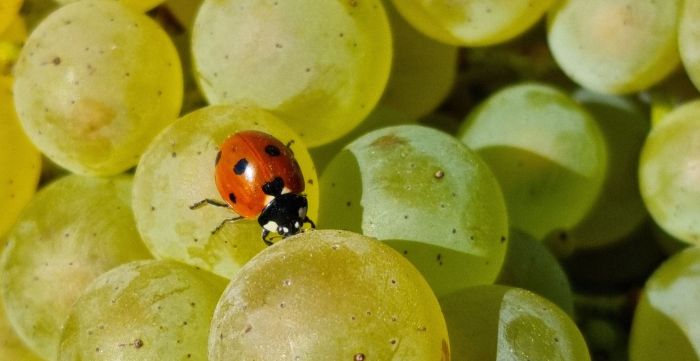
harvest report
26.12.2022
2022 Harvest Report from Delphine Boulard
<p>2022: a dry and solar year that continues the trend of modifying our way of working each <span class="zalup"><span><glossary term="Vintage" title="1109">vintage</glossary><span>.</span></span></span> </p>
<p>From May onwards, we had no rain until right before <span class="zalup"><span><glossary term="Harvest" title="521">harvest</glossary><span>.</span></span></span> This meant the soils were hard like concrete, severely limiting our ability to work them to the best of our abilities. <br />
<br />
The leaves were fully grown by April, which was very fast. By early June the vines were <glossary term="Flowering" title="1179">flowering</glossary> and by the end of the month, the bunches were already beginning to form, once again at breakneck speed. We began <glossary term="Harvest" title="521">harvesting</glossary> on September 5th.</p>
<p>Despite the complicated conditions, the quality and quantity of the <glossary term="Harvest" title="521">harvest</glossary> was exceptional. We even had to order new 600L <glossary term="Cask" title="242">casks</glossary> from our <glossary term="Tonnelier" title="1031">tonnelier</glossary> to <glossary term="Vinification" title="1104">vinify</glossary> all the juice (see below).</p>
<p><img src="https://louisdressner.com/uploads/images/article//961/50/5d/505d7508a08f0540e6f6dc266cfca436.jpg" /><img src="https://louisdressner.com/uploads/images/article//961/68/31/68313697f80d06f68c00e6c1fd02c5f8.jpg" /><img src="https://louisdressner.com/uploads/images/article//961/a5/b5/a5b54f938a3dad816f42c95ff065bcb5.jpg" /><img src="https://louisdressner.com/uploads/images/article//961/ac/30/ac30ceaedd6e2fd9cd53819d146f286f.jpg" /><img src="https://louisdressner.com/uploads/images/article//961/12/ea/12eaae94ec410b127b2f8dd4f9244395.jpg" /><img src="https://louisdressner.com/uploads/images/article//961/69/94/69947cb1a54d909ca980b616ad59060e.jpg" /><img src="https://louisdressner.com/uploads/images/article//961/7f/5a/7f5a2abd689c72f84d0fa09847d4959a.jpg" /><img src="https://louisdressner.com/uploads/images/article//961/50/01/5001885cffc60fedd87a8efa22bc59fc.jpg" /></p>
Article
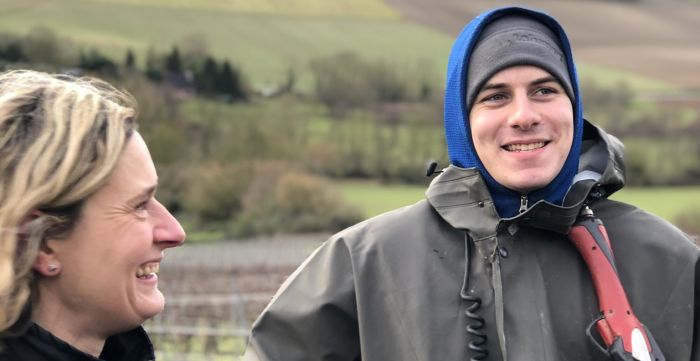
producer visit
30.09.2020
This visit with Delphine Boulard took place in January, 2020
<p><em><strong>This visit with Delphine Boulard took place in January, 2020.</strong></em></p>
<p><em><strong>Words by Jules Dressner, photos by Juliette Pope.</strong></em></p>
<p><img src="http://louisdressner.com/uploads/images/article/2020_Sep_30//05/0f/050f5b9f2d28e0ec8cee2d269c18a0a8.jpg" /></p>
<p>We began our visit by meeting Delphine and her husband Matthieu in <span class="zalup"><span><glossary term="La Neuville-aux-Larris" title="1420">La Neuville-aux-Larris</glossary><span>,</span></span></span> the village where the Boulard family began making wine in the 1960’s under the Raymond Boulard name. We’ve been visiting Francis and Delphine for close to a decade, but it was our first time visiting their <glossary term="Vallée de la Marne" title="1068">Marne</glossary> <glossary term="Parcel" title="760">parcels </glossary>(Francis’ house and <glossary term="Cellar" title="254">cellar</glossary> was a solid hour away in the <glossary term="Montagne de Reims" title="673">Montagne de Reims</glossary>). </p>
<p>In the center square, we got a glimpse of Delphine’s uncle (he looks a lot like his brother Francis!) and the original Raymond Boulard winery. This is where Francis worked as head winemaker from the early 1970’s until splitting off with Delphine to form Francis Boulard et Fille in 2009. This decision ultimately dissolved the Raymond Boulard winery, with the land split three ways between each sibling. Delphine continues to work as a <glossary term="Vigneron/Vignaiolo" title="1089">vigneronne</glossary> indépendante while her aunt and uncle sell the grapes from their land to big <span class="zalup"><span><glossary term="Négociant" title="729">négociants</glossary><span>.</span></span></span> </p>
<p>This sector is where the family’s historic land originates, in all six <glossary term="Parcel" title="760">parcels</glossary> of <span class="zalup"><span><glossary term="Pinot Meunier" title="804">Pinot Meunier</glossary><span>.</span></span></span> We began the tour by visiting a <glossary term="Plot" title="1133">plot</glossary> planted in 1964 in the <glossary term="Hamlet" title="519">hamlet</glossary> of Paradis.</p>
<p><img src="http://louisdressner.com/uploads/images/article/2020_Sep_30//cf/1d/cf1d1abed91beefa26120bef0a86cb94.jpg" /></p>
<p>Perched atop a small road at the top of the hill, the winds were constant and freezing.</p>
<p><em>“It’s always like this. It’s really rough in the winter.” </em></p>
<p>The vines are 100% <glossary term="Pinot Meunier" title="804">Pinot Meunier</glossary> and <glossary term="Exposition" title="430">exposed</glossary> full South. </p>
<p><img src="http://louisdressner.com/uploads/images/article/2020_Sep_30//b7/2f/b72fee240c94cf512a8f9f9f1c665302.jpg" /></p>
<p>In the 400 <glossary term="Hectare" title="523">hectares</glossary> planted in this sector of the <span class="zalup"><span><glossary term="Vallée de la Marne" title="1068">Marne</glossary><span>,</span></span></span> only 3.2 are farmed <span class="zalup"><span> <glossary term="Organic" title="746">organically</glossary><span>.</span></span></span> And Delphine owns 1.2 of those. She does not work the soils in the winter in order to retain water reserves. </p>
<p>From Paradis, we walked down to a tiny <glossary term="Plot" title="1133">plot</glossary> of a few rows. Delphine’s son Quentin was out their <glossary term="Pruning" title="834">pruning</glossary> with their main employee. </p>
<p><img src="http://louisdressner.com/uploads/images/article/2020_Sep_30//ac/36/ac36575697e0269bebabc7e85d3298a7.jpg" /></p>
<p><img src="http://louisdressner.com/uploads/images/article/2020_Sep_30//c6/60/c6609c3f9849ec38889af72a4e2ab028.jpg" /></p>
<p><img src="http://louisdressner.com/uploads/images/article/2020_Sep_30//e8/b3/e8b3ef2a628f64fb1b6faccc9317fa7f.jpg" /></p>
<p>This <glossary term="Plot" title="1133">plot</glossary> was also planted exclusively in <span class="zalup"><span><glossary term="Pinot Meunier" title="804">Pinot Meunier</glossary><span>.</span></span></span></p>
<p>After a freezing tour of the vines, we drove over to Delphine’s new house and <span class="zalup"><span><glossary term="Cellar" title="254">cellar</glossary><span>.</span></span></span> The original <glossary term="Cellar" title="254">cellar</glossary> was attached to Francis’ house but suffered a disastrous electrical fire in 2016. Knowing he was planning to retire in 2017, Delphine decided she would look for a structure that could house both her family and wines. </p>
<p>It’s a beautiful property with lots of free-roaming ducks. </p>
<p><img src="http://louisdressner.com/uploads/images/article/2020_Sep_30//ca/d6/cad694cba84a23dd31126be2c3963daa.jpg" /></p>
<p>We also got to meet our friend Butt Dog, who got his nickname from this majestic (and posterior emphasized) photo.</p>
<p><img src="http://louisdressner.com/uploads/images/article/2020_Sep_30//ef/9c/ef9cbd125a5c8d9ba24c0423a4a6cc59.jpg" /></p>
<p>The new <glossary term="Cellar" title="254">cellar</glossary> was looking good and not much bigger than the original. </p>
<p><img src="http://louisdressner.com/uploads/images/article/2020_Sep_30//5a/d6/5ad6f58fa7a284ae3c74d2628e4591be.jpg" /></p>
<p><img src="http://louisdressner.com/uploads/images/article/2020_Sep_30//9e/3e/9e3e15cec8a1e7a58cb7593605c87468.jpg" /></p>
<p>Fortunetly, the building foundation permits a constant temperature throughout the year. 100% of the wines are <glossary term="Fermentation" title="441">fermented</glossary> in <glossary term="Barrel" title="142">barrel</glossary> along with a few <glossary term="Foudre" title="462">foudres</glossary> and each <glossary term="Parcel" title="760">parcel</glossary> is <glossary term="Vinification" title="1104">vinified</glossary> individually, with <glossary term="Blending" title="1146">blending</glossary> choices made later on. Many of the <glossary term="Barrel" title="142">barrels</glossary> are on the newer side since they lost 50% of their <glossary term="Barrel" title="142">barrels</glossary> and <glossary term="Reserve Wine" title="1223">reserve wines</glossary> in the fire. The only major shift stylistically is that Delphine favors <glossary term="Burgundian" title="210">Burgundian</glossary> <glossary term="Barrel" title="142">barrels</glossary> over the 500L <glossary term="Demi-Muid" title="388">demi-muids</glossary> her father preferred.</p>
<p><em>“I think the </em><glossary term="Terroir" title="1026"><em>terroirs</em></glossary><em> are expressed better this way. It helps with the single vineyard </em><glossary term="Vinification" title="1104"><em>vinifications</em></glossary><em>.”</em></p>
<p>We then sat down and had a very impressive tasting before meeting up the Tarlant for lunch. </p>
<p>Kudos to Delphine and her sweet branded jacket. </p>
<p><img src="http://louisdressner.com/uploads/images/article/2020_Oct_01//87/69/876922ab5d4b353e45396e537185960e.jpg" /></p>
Article

producer visit
25.07.2019
This visit with Francis Boulard took place in July 2013
<p><strong><em>This visit with Francis Boulard took place in July 2013.</em></strong></p>
<p><strong><em>Words by Jules Dressner, photos by Maya Pedersen.</em></strong></p>
<p>After a three day taste-a-thon revolving around <span class="zalup"><span><glossary term="Vinexpo" title="1100">Vinexpo</glossary><span>,</span></span></span> we took a train to <glossary title="267">Champagne</glossary> to visit Francis Boulard! We finally got to meet his daughter and partner Delphine, but it was quick since she had to go to her daughter's music recital. After a bit of chit-chat, we headed straight for Francis' best vineyard, Les Rachais! <br />
<br />
<img src="http://louisdressner.com/uploads/images/article/2019_Jul_25//c2/c3/c2c31da362800e44f02f154d1844b43d.jpg" /><br />
<br />
As you can see in the video below, the entire hill is very densely planted.<br />
<br />
<iframe allowfullscreen="" frameborder="0" height="360" src="//www.youtube.com/embed/GIxi_vlrTEc" width="640"></iframe></p>
<p>This wasn't always the case.<br />
<br />
<em>"50 years ago, there were no vines here. You made more money growing raspberries or apples. Most of the land was abandoned after <span class="zalup"><span> </span></span></em><span class="zalup"><span><glossary term="Phylloxera" title="788"><em>phylloxera</em></glossary></span></span><em><span class="zalup"><span><span>.</span></span></span> People only started replanting vines in the 60's when </em><glossary term="Champagne" title="267"><em>Champagne</em></glossary><em> </em><glossary term="Négociant" title="729"><em>négoces</em></glossary><em> started paying more."</em><br />
<br />
Francis would know, since he's seen been working this land for the last 45 years. Starting in his early teens, he began tending the 14 hectares split between his father and uncle (not all vines). For the first seven years he was a manual laborer.</p>
<p><em>"<a href="http://www.vigneron-champagne.com/">I may be on the computer a lot these days</a>, but back then I was spending 100% of my time in the vines!" </em><br />
<br />
<em>Les Rachais</em> is the <glossary term="Parcel" title="760">parcel</glossary> Francis conducted his <glossary term="Biodynamic" title="160">biodynamic</glossary> experiments on in 2001, which convinced him to stop using <glossary term="Chemicals" title="279">chemicals</glossary> in the vineyard. The vines were planted by his father in 1967 from <glossary term="Burgundian" title="210">Burgundian</glossary> <span class="zalup"><span><glossary term="Selection Massale" title="941">selection massales</glossary><span>.</span></span></span> The site's <glossary term="Chardonnay" title="271">Chardonnay</glossary> is mostly at the top, with some <glossary term="Pinot Noir" title="805">Pinot Noir</glossary> at the bottom; the soils consist of 2m of <glossary term="Limestone" title="596">limestone</glossary> <span class="zalup"><span><glossary term="Sand" title="909">sands</glossary><span>,</span></span></span> with a solid <glossary term="Limestone" title="596">limestone</glossary> <span class="zalup"><span><glossary term="Subsoil" title="991">subsoil</glossary><span>.</span></span></span> <br />
<br />
Here I am grabbing some for the now famous "Jules holds soil in his hand to highlight the vineyard's <glossary term="Terroir" title="1026">terroir</glossary>" shot.</p>
<p><img src="http://louisdressner.com/uploads/images/article/2019_Jul_25//46/00/4600ec44824021b0450b50062a44754f.jpg" /></p>
<p><img src="http://louisdressner.com/uploads/images/article/2019_Jul_25//9a/6e/9a6e9351bd8655b4786d0090e44577ec.jpg" /><br />
<br />
In Les Rachais, Francis averages a very low 50-55 <glossary term="hl/ha" title="528">hl/h</glossary> in <span class="zalup"><span><glossary term="Yield" title="1129">yields</glossary><span>.</span></span></span> <br />
<br />
<em>"Ironically, the </em><glossary term="Grand Cru" title="501"><em>Grand Cru</em></glossary><em> vineyards have the highest </em><glossary term="Yield" title="1129"><em>yields</em></glossary><em> in <span class="zalup"><span> </span></span></em><span class="zalup"><span><glossary term="Champagne" title="267"><em>Champagne</em></glossary></span></span><em><span class="zalup"><span><span>,</span></span></span> around 120<span class="zalup"><span><glossary term="hl/ha" title="528"><em>hl/h</em></glossary><span>.</span></span></span>"</em><br />
<br />
Much like the rest of France, the last few months have been dubbed "the spring that never came"; overcast skies, a lot of rain and having to heat the house until early June has been the norm, with the weather leading to very late <glossary term="Flowering" title="1179">flowering</glossary> due to lack of sunlight.</p>
<p><img src="http://louisdressner.com/uploads/images/article/2019_Jul_25//84/a0/84a0d3955ada84161acc8da76dc4aa7f.jpg" /><br />
<br />
There have also been issues with heavy grass growth due to all the water. Since the Boulard's don't cut their grass in the winter, they've been playing catch-up for the last few months.<br />
<br />
<em>"In </em><span class="zalup"><span><glossary term="Champagne" title="267"><em>Champagne</em></glossary></span></span><em><span class="zalup"><span><span>,</span></span></span> the vines are very low to the ground. Any kind of high grass will cause friction, which makes illness spread dangerously fast."</em><br />
<br />
Here are some pictures to illustrate how low the vines are planted. </p>
<p><img src="http://louisdressner.com/uploads/images/article/2019_Jul_25//5d/79/5d79191923e6bb49b61e54f2db32a5e8.jpg" /></p>
<p><img src="http://louisdressner.com/uploads/images/article/2019_Jul_25//99/5a/995a4a10b57ed2982a61d62c9bf2765d.jpg" /></p>
<p><img src="http://louisdressner.com/uploads/images/article/2019_Jul_25//35/d1/35d1a07c2049c1da3fd589a9e5ea2627.jpg" /></p>
<p><img src="http://louisdressner.com/uploads/images/article/2019_Jul_25//10/9c/109cdde4dcec0511fcab7d25a51a468f.jpg" /></p>
<p>The area suffers heavily from <span class="zalup"><span><glossary term="cochenilles" title="311">cochenilles</glossary><span>,</span></span></span> little bugs that suck the sap out and weaken the vine. </p>
<p><img src="http://louisdressner.com/uploads/images/article/2019_Jul_25//4e/a0/4ea08d1c1e6f42fcf1bcc442fa6249df.jpg" /><br />
<br />
There is currently nothing in <glossary term="Organic" title="746">organic</glossary> <glossary term="Agriculture" title="78">agriculture</glossary> to effectively get rid of them, but off of a friend's recommendation, Francis has had success fighting them off with a spray of fern and garlic.<br />
<br />
A recently passed law dictates that you cannot helicopter spray within 120m of <glossary term="Organic" title="746">organic</glossary> vineyards, which is why there are very visible AB (<glossary term="Organic Certification" title="260">certified organic</glossary>) signs bordering Francis' vines.</p>
<p><img src="http://louisdressner.com/uploads/images/article/2019_Jul_25//b5/26/b52623a8b4c374e3e76d363d76fbe9fc.jpg" /><br />
<br />
<em>"A lot of people aren't happy about this law."</em><br />
<br />
Francis later explained that he feels the need to have AB <glossary term="Organic Certification" title="260">certification</glossary> because more and more growers are now claiming to work "almost" <glossary term="Organic" title="746">organically</glossary> as a selling point. So if they have a perfect year, they won't use anything and claim the grapes are <span class="zalup"><span><glossary term="Organic" title="746">organic</glossary><span>,</span></span></span> but will resort right back to <glossary term="Systemic Product" title="1002">systemics</glossary> as soon as the weather takes a turn for the worse.<br />
<br />
<em>"That's where the </em><glossary term="Organic Certification" title="260"><em>certification</em></glossary><em>'s merit lies. It assures the customer and ourselves that we are fully committed to </em><glossary term="Organic" title="746"><em>organic</em></glossary><em> </em><span class="zalup"><span><glossary term="Viticulture" title="1103"><em>viticulture</em></glossary></span></span><em><span class="zalup"><span><span>.</span></span></span>"</em><br />
<br />
<strong>Organic Boulard Aside™:</strong> the <glossary term="Vallée de la Marne" title="1068">Marne's</glossary> serious lack of <glossary term="Manganese" title="626">manganese</glossary> often makes the vines look <em>"old, red and sick"</em>, but since their <glossary term="Conversion" title="332">conversion</glossary> to <span class="zalup"><span><glossary term="Organic" title="746">organics</glossary><span>,</span></span></span> Francis claims the vines look young, green and healthy. <br />
<br />
Francis' <glossary term="Plowing" title="810">plowed</glossary> rows proved a striking contrast to his <glossary term="Herbicide" title="526">chemically de-grassed</glossary> surroundings.</p>
<p><img src="http://louisdressner.com/uploads/images/article/2019_Jul_25//1d/68/1d6810d062d5d0339b654f2f16d32d96.jpg" /></p>
<p><img src="http://louisdressner.com/uploads/images/article/2019_Jul_25//a8/ac/a8acb95b90a0084636352753275d36ee.jpg" /></p>
<p><img src="http://louisdressner.com/uploads/images/article/2019_Jul_25//51/2e/512e10e8c74c3f4ea4b99bb4aa07406b.jpg" /><br />
<br />
Not too far off, the <glossary term="Chardonnay" title="271">Chardonnay</glossary> for <em>"</em>Vielles Vignes Blanc de Blanc<em>"</em> was planted in 1985.</p>
<p><img src="http://louisdressner.com/uploads/images/article/2019_Jul_25//4b/e2/4be286a0885c45b50214c6159228bb04.jpg" /></p>
<p><img src="http://louisdressner.com/uploads/images/article/2019_Jul_25//3e/2c/3e2c673f998920703aa783ceff3fa0a6.jpg" /></p>
<p><img src="http://louisdressner.com/uploads/images/article/2019_Jul_25//a8/8a/a88a5036e1842e78ab15943256251c82.jpg" /></p>
<p><img src="http://louisdressner.com/uploads/images/article/2019_Jul_25//a2/f8/a2f8810cbace0f9684bb626d49a5056e.jpg" /></p>
<p><img src="http://louisdressner.com/uploads/images/article/2019_Jul_25//9f/ec/9fecf5a7d387da80e4fd5cc37ba84bdb.jpg" /></p>
<p><img src="http://louisdressner.com/uploads/images/article/2019_Jul_25//ba/51/ba518a95b983d3b410e18cc759eb25ca.jpg" /></p>
<p>It is next to a small <glossary term="Plot" title="1133">plot</glossary> of <glossary term="Pinot Noir" title="805">Pinot Noir</glossary> used for the "Les Rachais Rosé". These were planted in 1980.</p>
<p><img src="http://louisdressner.com/uploads/images/article/2019_Jul_25//65/c8/65c8ab6aa2a2fc9d41d52188ce5b4df2.jpg" /><br />
<br />
After our extensive tour of Les Rachais, we briefly visited the <span class="zalup"><span><glossary term="Cellar" title="254">cellar</glossary><span>,</span></span></span> which used to be a cow stable. </p>
<p><img src="http://louisdressner.com/uploads/images/article/2019_Jul_25//ec/ea/ecea6558ee31d1498b6c452ffa3e0cd2.jpg" /></p>
<p><img src="http://louisdressner.com/uploads/images/article/2019_Jul_25//f2/76/f276ae53e657a2050355c93a4ae377e6.jpg" /></p>
<p><img src="http://louisdressner.com/uploads/images/article/2019_Jul_25//44/48/4448f3c88a1111e040e42bc98853f68a.jpg" /></p>
<p><img src="http://louisdressner.com/uploads/images/article/2019_Jul_25//a2/45/a2451998d7b9f279592ea1f250b8567d.jpg" /></p>
<p><img src="http://louisdressner.com/uploads/images/article/2019_Jul_25//30/bc/30bc54478e9c920196023253794370ff.jpg" /></p>
<p>Francis buys his <glossary term="Barrel" title="142">barrels</glossary> from the only independent <glossary term="Tonnelier" title="1031">tonnelier</glossary> in <span class="zalup"><span><glossary term="Champagne" title="267">Champagne</glossary><span>,</span></span></span> who luckily enough lives in the same village.<br />
<br />
We then tasted and yes, everything was really amazing, with the 2006 "Millesimé" and "Petrea" as particular standouts. Speaking of "Petrea", Francis' <glossary term="Solera" title="967">solera</glossary> <span class="zalup"><span><glossary term="Champagne" title="267">Champagne</glossary><span>,</span></span></span> he's decided to pull the current batch out of production to start a new <glossary term="Solera" title="967">solera</glossary> from his <glossary term="Organic Certification" title="260">certified organic</glossary> <span class="zalup"><span><glossary term="Vintage" title="1109">vintages</glossary><span>.</span></span></span> That means it will have started in 2010, and since Francis wants at least five <glossary term="Vintage" title="1109">vintages</glossary> to be <glossary term="Blending" title="1146">blended</glossary> together before selling it, it's going to be a few years till we see another bottle of this amazing wine. <br />
<br />
Unlike some of our growers, Francis isn't really that adventurous when it comes to <glossary term="Vinification" title="1104">vinification</glossary> strategies or experiments. <br />
<br />
<em>"It's not really a </em><glossary term="Vinification" title="1104"><em>vinification</em></glossary><em> as much as letting wine </em><glossary term="Fermentation" title="441"><em>ferment</em></glossary><em>."</em><br />
<br />
The only thing he's actively noticed over the years is that he gets more <glossary term="Minerality" title="662">minerality</glossary> when he uses smaller <span class="zalup"><span><glossary term="Barrel" title="142">barrels</glossary><span>.</span></span></span> <br />
<br />
Someway, somehow, four hours had gone by and it was dinner time. My favorite tidbit of conversation involved Francis explaining that when you study wine marketing, it is systematically taught to incorporate 20% of a <glossary term="Champagne" title="267">Champagne</glossary>'s asking price into a marketing budget. That's why a lot of fancy, shiny golden pamphlets with a smiling family of suited up <glossary term="Champenois" title="269">Champenois</glossary> can be found by many tasting tables, and why the stuff is so darn expensive! <br />
<br />
<em>"I'd rather put that that 20% back into the vines!"</em><br />
<br />
We love you Francis!</p>
Article
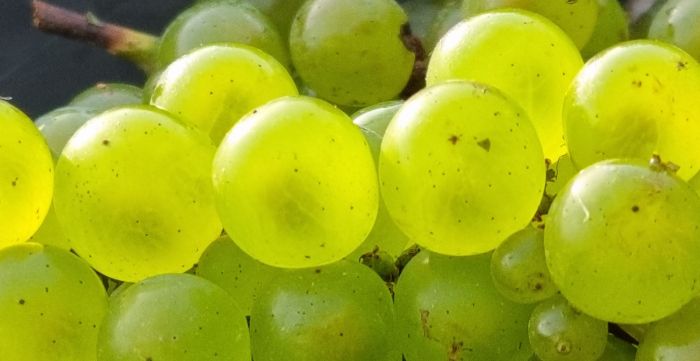
harvest report
10.12.2021
2021 Harvest Report from Delphine Boulard
<p>Here are a few pics from our <span class="zalup"><span> <glossary term="Harvest" title="521">harvest</glossary><span>.</span></span></span> We lost 50% of our crop to <glossary term="Frost" title="1135">frost</glossary> and <span class="zalup"><span> <glossary term="Mildew" title="1137">mildew</glossary><span>.</span></span></span></p>
<p>Here's to 2022!<br />
<img src="https://louisdressner.com/uploads/images/article//913/ab/14/ab14f0d85ddf45a55a0581e317936b3c.jpg" /><img src="https://louisdressner.com/uploads/images/article//913/46/55/46557be9af1456675e5c732553ae65ab.jpg" /><img src="https://louisdressner.com/uploads/images/article//913/74/79/74795d9f10e2620d5606a92da69bb9f2.jpg" /><img src="https://louisdressner.com/uploads/images/article//913/e9/a1/e9a1935600199a21ba0c3c28f5287747.jpg" /><img src="https://louisdressner.com/uploads/images/article//913/55/75/5575cb7a6793f0fdd6982739eb056f2b.jpg" /><img src="https://louisdressner.com/uploads/images/article//913/fb/9e/fb9e2cac2f8f234cca8893f5627db47c.jpg" /><img src="https://louisdressner.com/uploads/images/article//913/ed/e4/ede424b3c3e4d767b21f818538d42542.jpg" /></p>
Article
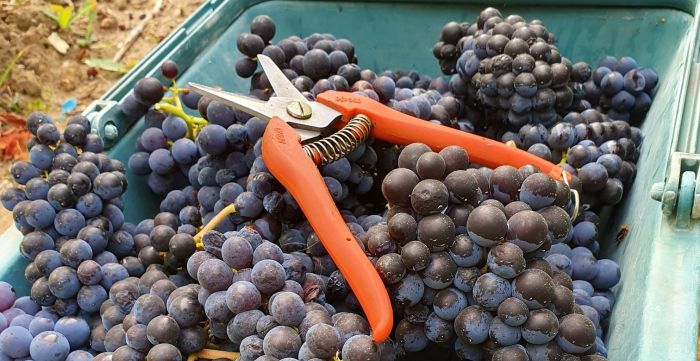
harvest report
19.01.2020
2020 Harvest Report from Delphine Boulard
<p><u><strong>November 5th, 2020:</strong></u></p>
<p>Here are a few pictures from the extremely precocious 2020 <span class="zalup"><span><glossary term="Harvest" title="521">harvest</glossary><span>.</span></span></span> We started on August 25th. The quality is high but quantities are low. Our <glossary term="Chardonnay" title="271">Chardonnays</glossary> were touched by <glossary term="Oidium" title="737">oidium</glossary> and will be sorely lacking this year. Oidium is increasingly becoming a problem for us, becoming more and more normal due to global warming and the heatwaves we now experience in the region. </p>
<p>The wines are currently very <span class="zalup"><span><glossary term="Aromatic" title="120">aromatic</glossary><span>,</span></span></span> a little less <glossary term="Acidity" title="71">acidic</glossary> than 2019 but it's looking like a good year. </p>
<p><img src="https://louisdressner.com/uploads/images/article//861/76/d9/76d93391e8c2081848010b571d121f0c.jpg" /><img src="https://louisdressner.com/uploads/images/article//861/25/f1/25f166bf80f40555e74dd595e28e3b37.jpg" /><img src="https://louisdressner.com/uploads/images/article//861/c7/ae/c7ae2d72bfc70b7650a8c70a046b61e5.jpg" /><img src="https://louisdressner.com/uploads/images/article//861/0c/10/0c10f48e88e7bb1951300988c223a742.jpg" /></p>
Article
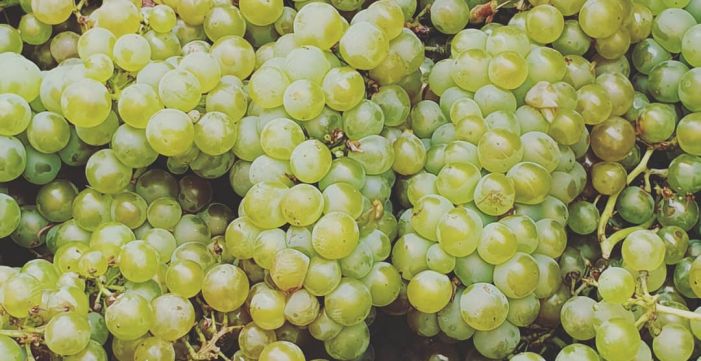
harvest report
05.10.2019
2019 Harvest Report from Delphine Boulard
<p><u><strong>October 3rd, 2019:</strong></u></p>
<p>Our <glossary term="Harvest" title="521">harvest</glossary> started on September 12th and lasted one week. It was perfect weather and 2019 is promising to be be a very good <glossary term="Vintage" title="1109">vintage</glossary> in quantity and quality. The <glossary term="alcoholic potential" title="1381">potentials</glossary> are between 11 and 12%. </p>
<p>We are very excited to attempt our first <glossary term="Coteaux Champenois" title="268">Coteaux Champenois</glossary> from <span class="zalup"><span><glossary term="Pinot Noir" title="805">Pinot Noir</glossary><span>.</span></span></span> It comes from our Mailly <span class="zalup"><span><glossary term="Grand Cru" title="501">Grand Cru</glossary><span>,</span></span></span> a new acquisitionof 50 <glossary term="Are" title="1208">ares</glossary> worked <span class="zalup"><span><glossary term="Organic" title="746">organically</glossary><span>.</span></span></span> </p>
<p><img src="http://louisdressner.com/uploads/images/article/2020_Oct_05//78/dd/78dd958f629748113c7e1015f90e3bb6.jpg" /><img src="http://louisdressner.com/uploads/images/article/2020_Oct_05//1a/12/1a128c63b3682fabf265d5da3cb4b7a4.jpg" /><img src="http://louisdressner.com/uploads/images/article/2020_Oct_05//f7/9e/f79e4964348e0c4c7410feb751d6f21a.jpg" /><img src="http://louisdressner.com/uploads/images/article/2020_Oct_05//f8/3d/f83d86b34650382443e4a8bebea6fd91.jpg" /><img src="http://louisdressner.com/uploads/images/article/2020_Oct_05//03/b4/03b49050508399d6505cf020cdf990fb.jpg" /><img src="http://louisdressner.com/uploads/images/article/2020_Oct_05//e5/17/e517e3d98ebc613e8a8fb66bf4f251bf.jpg" /></p>
Article
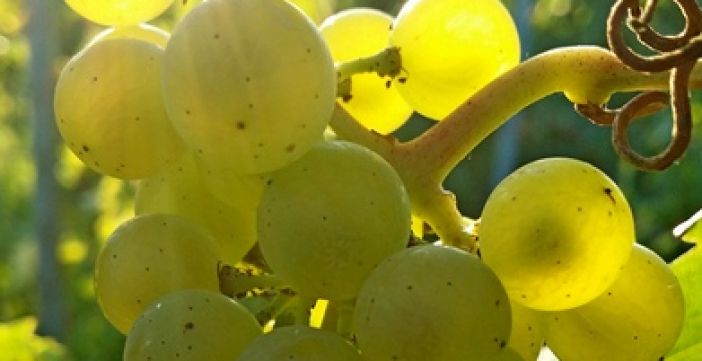
harvest report
08.06.2015
2015 Harvest Report from Francis Boulard
<p><u><strong>September 11th 2015:</strong></u></p>
<p><img src="http://louisdressner.com/uploads/images/article/2019_Sep_20//e2/fe/e2fe7b75f8b851c9f5d22db259e1154b.jpg" /></p>
<p>On this day of September 9th, 2015, I began my 43rd <span class="zalup"><span><glossary term="Harvest" title="521">harvest</glossary><span>.</span></span></span> To celebrate this 43rd anniversary, I've been given a promising crop! Despite regular rain over the last three weeks and the hydric stress provoked by a two month heatwave and <span class="zalup"><span><glossary term="Drought" title="1167">drought</glossary><span>,</span></span></span> we have an exemplary sanitary state for picking. Honestly, these conditions had me anticipating a catastrophic scenario similar to 2011. That year, a long period of dryness was followed by heavy rains a few days before<span class="zalup"><span> <glossary term="Harvest" title="521">harvest</glossary><span>,</span></span></span> leading to a tremendous amount of <glossary term="Botrytis/Noble Rot" title="181">botrytis</glossary> that cost us 30% of our crop.</p>
<p><img src="http://louisdressner.com/uploads/images/article/2019_Sep_20//1c/fc/1cfc77fe70958655f6b6bf54c2e47737.jpg" /></p>
<p>Fortunately, this year the cool nights and cold morning (with temperatures hovering around 5° C) kept the <glossary term="Cluster/Bunch" title="1138">bunches</glossary> in great sanitary shape and with good <glossary term="alcoholic potential" title="1381">natural degrees</glossary> superior to 10%.<br />
<br />
Here is the panorama from the top of the Rachais:</p>
<p><img src="http://louisdressner.com/uploads/images/article/2019_Sep_20//e0/7e/e07ecad52bf82a946117b88ac23bf080.jpg" /></p>
<p>Les Rachais's grapes were also excellent, with <glossary term="alcoholic potential" title="1381">potentials</glossary> between 10,5 – 11 % Vol. It's looking like it's going to be a great <span class="zalup"><span><glossary term="Vintage" title="1109">vintage</glossary><span>.</span></span></span></p>
<p><img src="http://louisdressner.com/uploads/images/article/2019_Sep_20//e2/24/e224578a21a0aa712670ba306c29f60f.jpg" /></p>
<p>After one week of picking under a generous, warm sun, we ended our <glossary term="Harvest" title="521">harvest</glossary> under heavy rain. Two of those days were very tough: it was a real ordeal to cut the grapes, not to mention having to carry the last cases on slippery, muddy paths to the covered <span class="zalup"><span><glossary term="Manual Press" title="1200">press</glossary><span>.</span></span></span></p>
<p><img src="http://louisdressner.com/uploads/images/article/2019_Sep_20//58/02/580261b9708913db6578af245778412d.jpg" /></p>
<p>Despite the rain, the natural degrees and sanitary state of the last grapes remained high in quality, though the <glossary term="Botrytis/Noble Rot" title="181">botrytis</glossary> did start catching up with the vines towards the end.<br />
<br />
So now, we wait for the <glossary term="Alcoholic Fermentation" title="87">alcoholic fermentations</glossary> of these new wines to better understand the qualitative potential of grapes that suffered from two months of dryness and abundant rain in mid-August.</p>
Article
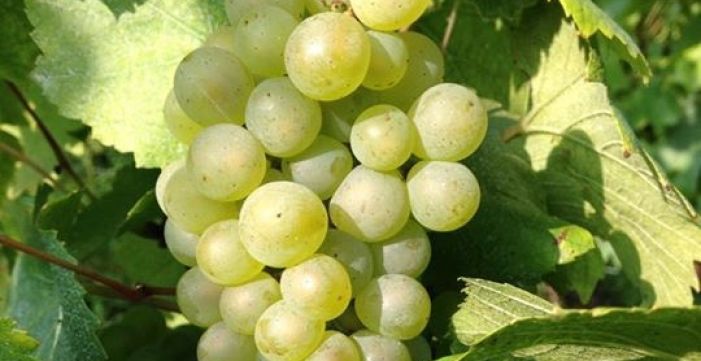
harvest report
05.08.2014
2014 Harvest Reports from Francis Boulard
<p><img src="http://louisdressner.com/uploads/images/article/2019_Sep_20//f7/6b/f76bdd274e01eb391a4f8380cdc91c23.jpg" /></p>
<p>We got through 2014 unscathed! The grapes were in exceptional sanitary state, with <glossary term="alcoholic potential" title="1381">potentials</glossary> between 10,5 and 11. We are so happy, and expect an exceptional <span class="zalup"><span><glossary term="Vintage" title="1109">vintage</glossary><span>.</span></span></span></p>
<p><img src="http://louisdressner.com/uploads/images/article/2019_Sep_20//b1/ea/b1ea6620beb3577a1a9e53e5f288a908.jpg" /></p>
<p><img src="http://louisdressner.com/uploads/images/article/2019_Sep_20//05/e4/05e43b0f160fe14bc1e3d007147c359c.jpg" /></p>
<p><img src="http://louisdressner.com/uploads/images/article/2019_Sep_20//75/fa/75fae544a554081a7747cdfeaa2b20fb.jpg" /></p>
Article
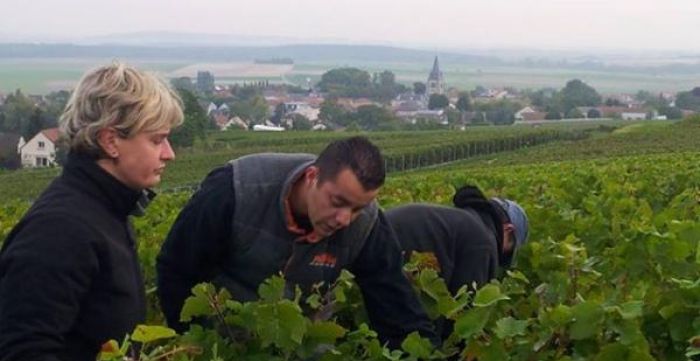
harvest report
11.10.2013
2013 Harvest Report from Francis Boulard
<p><u><strong>October 2nd and 5th, 2013:</strong></u></p>
<p>Here we go -under the sun- for this first day of <span class="zalup"><span><glossary title="521">harvest</glossary><span>,</span></span></span> early in the morning of October 2nd, 2013.<br />
<br />
We took out our shears and baskets to <glossary title="521">harvest</glossary> our first <glossary title="1138">bunches</glossary> in a 49 year old <glossary title="760">parcel</glossary> of <span class="zalup"><span><glossary title="805">Pinot Noir</glossary><span>,</span></span></span> planted in <glossary term="Selection Massale" title="941">selection massale</glossary> on 3309 <glossary title="869">rootstock</glossary> (the hastiest) in the <span class="zalup"><span><glossary title="637">Massif Saint-Thierry</glossary><span>,</span></span></span> on <span class="zalup"><span><glossary title="955">silicious</glossary><span>-</span></span></span><glossary title="596">limestone</glossary> soils right off a <glossary title="345">coteau</glossary> of the village of Cormicy.<img src="http://louisdressner.com/uploads/images/article/2019_Sep_20//2f/99/2f991ee370313853ccac840f9b512efa.jpg" /></p>
<p>On this <glossary title="909">sandy</glossary> terrain, some <glossary title="181">botrytis</glossary> has appeared, requiring a meticulous selection and technical shear work to remove damaged grapes from otherwise healthy <span class="zalup"><span><glossary title="1138">bunches</glossary><span>.</span></span></span> In total, this <glossary title="760">parcel</glossary> more or less represents 15% of our total <span class="zalup"><span><glossary title="521">harvest</glossary><span>,</span></span></span> all under under the watching eye of Delphine, making sure our 12 harvesters (most veterans with over 10 years experience) don't miss a single quality grape.</p>
<p><img src="http://louisdressner.com/uploads/images/article/2019_Sep_20//ac/21/ac211438af06ad61d30f432e98bbc2ce.jpg" /></p>
<p>We now await the first <glossary term="Pressing" title="827">press</glossary> to taste the <span class="zalup"><span><glossary term="Must" title="700">must</glossary><span>,</span></span></span> analyze the initial results (<glossary title="783">PH</glossary> and <glossary term="Acidity" title="71">acidity</glossary>) to start planning out our approach to the 2013<span class="zalup"><span> <glossary title="1109">vintage</glossary><span>.</span></span></span><br />
<br />
<strong>___</strong><br />
<br />
On the <glossary title="301">clay</glossary> soils of the <span class="zalup"><span><glossary title="1068">Marne</glossary><span>,</span></span></span> our <glossary title="804">Pinot Meunier</glossary> is in still in a perfect sanitary state, keeping us hopeful for optimal quality.</p>
<p><img src="http://louisdressner.com/uploads/images/article/2019_Sep_20//b1/ed/b1edcf3d6a064463aeae78a033f0643b.jpg" /></p>
<p>And now for the first juices of 2013! From grapes who've gotten this far, having been spared from the <span class="zalup"><span><glossary term="Coulure" title="1252">coulure</glossary><span>,</span></span></span> <span class="zalup"><span><glossary title="1137">mildew</glossary><span>,</span></span></span> <span class="zalup"><span><glossary title="1136">hail</glossary><span>,</span></span></span> berry worms and <glossary title="181">botrytis</glossary> that has claimed so many of our grapes in this challenging 2013 <span class="zalup"><span><glossary title="1109">vintage</glossary><span>!</span></span></span> We're starting to relax, breathe easy as these grapes start alleviating our stress. But the final chapter will be rushed, as we need to <glossary title="521">harvest</glossary> the <span class="zalup"><span><glossary title="271">Chardonnay</glossary><span>,</span></span></span> which we are really pushing it to the last possible moment for ideal <glossary title="639">maturities</glossary> on their <span class="zalup"><span><glossary title="909">sandy</glossary><span>-</span></span></span><glossary title="596">limestone</glossary> soils.</p>
<p><img src="http://louisdressner.com/uploads/images/article/2019_Sep_20//1c/cf/1ccf2e4c194921eef2f0c17aa2629233.jpg" /></p>
<p><u><strong>CHAPTER 2:</strong></u><br />
<br />
Today is October 5th (a fruit day!) and we've begun harvesting Les Rachais. I know we're going to get good juice from these: dense, <span class="zalup"><span><glossary term="Concentration" title="324">concentrated</glossary><span>,</span></span></span> the "honey" of these old <glossary title="271">Chardonnays</glossary> just stuck to your fingers...</p>
<p><img src="http://louisdressner.com/uploads/images/article/2019_Sep_20//20/e5/20e504cc405bf964a1743c1845609a3b.jpg" /></p>
<p>In the <span class="zalup"><span><glossary title="254">cellar</glossary><span>:</span></span></span><br />
<br />
The <glossary title="792">pied de cuve</glossary> of Boulardian <glossary title="538">indigenous yeasts</glossary> has kicked off its <glossary title="441">fermentation</glossary> on Saturday from the <glossary term="Pinot Noir" title="805">Pinot Noir</glossary> mentioned earlier, and is in an active, full swing. I'm happy, but will only use this <glossary title="792">pied de cuve</glossary> if the other natural Boulardian <glossary title="1128">yeasts</glossary> have difficulties starting their own<span class="zalup"><span> <glossary title="976">spontaneous fermentations</glossary><span>.</span></span></span></p>
<p><img src="http://louisdressner.com/uploads/images/article/2019_Sep_20//1a/a3/1aa3d3a5013995fe6a54a11a03a9d04f.jpg" /></p>
Article
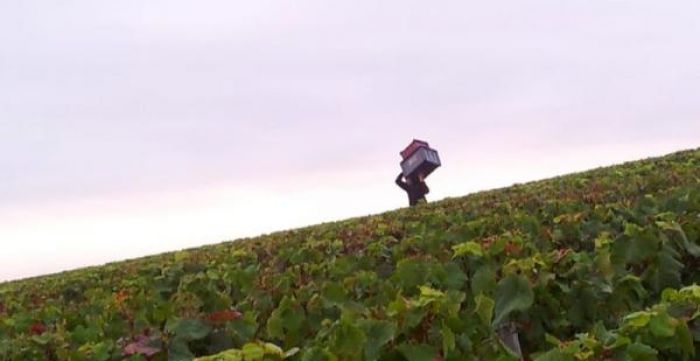
harvest report
19.09.2012
2012 Harvest Report from Francis Boulard
<p><u><strong>September 19th, 2012:</strong></u></p>
<p>Finally, grapes brought into the <glossary title="254">cellar</glossary> after an entire year of constant support… We suffered from <glossary title="1135">frost</glossary> in the spring, and this cold period also caused a lot of <glossary term="Coulure" title="1252">coulure</glossary> and <span class="zalup"><span><glossary term="Millerandage" title="1393">millerandage</glossary><span>.</span></span></span> The violent storms of June through July precipitated <span class="zalup"><span><glossary title="1137">mildew</glossary><span>,</span></span></span> first on the leaves, then on the grapes: vines who suffered the most lost about 30% of their <span class="zalup"><span><glossary title="1129">yield</glossary><span>.</span></span></span> Through hard work, we avoided <span class="zalup"><span><glossary title="737">odium</glossary><span>.</span></span></span><br />
<br />
Luckily we had a nice end of the season, with a dry August and September full of heat and sunshine. We're expecting nice juice and great wines as we begin the <span class="zalup"><span><glossary title="521">harvest</glossary><span>.</span></span></span></p>
<p><img src="http://louisdressner.com/uploads/images/article/2019_Sep_23//c2/fc/c2fc8268214ef1becd2c08fb2f6094a2.jpg" /></p>
<p>We started in this old vine <glossary title="760">parcel</glossary> in Murtet, grown in the <glossary title="909">sands</glossary> of <span class="zalup"><span><glossary title="637">Massif Saint-Thierry</glossary><span>.</span></span></span> 50 year old <glossary title="805">Pinot Noir</glossary> on 3309<span class="zalup"><span> <glossary title="500">grafts</glossary><span>,</span></span></span> the most precocious… The <glossary title="521">harvest</glossary> is done in two <glossary term="Pass" title="1144">passes</glossary> - three <glossary term="Sorting" title="1380">sortings</glossary> in accordance to the heterogeneity of the grapes over their three weeks of <span class="zalup"><span><glossary title="1179">flowering</glossary><span>.</span></span></span> We started with the ripest grapes, nice black berries. We'll come back for the rosier ones in 10 days.</p>
<p><img src="http://louisdressner.com/uploads/images/article/2019_Sep_23//8b/73/8b732619be41f44851c57750cb37065b.jpg" /></p>
<p>We're happy: our six<font color="#7b143e"><b> passed</b></font> treating the vines with only our little Honda Turbine after big storms (it was impossible to get the emjambeur tractor in there, the soils were too humid), occasionally on Sundays and even holidays, was not in vain. We were able to save the majority of the <span class="zalup"><span><glossary title="521">harvest</glossary><span>,</span></span></span> and even find some <glossary title="1138">clusters</glossary> untouched by <span class="zalup"><span><glossary title="1137">mildew</glossary><span>!</span></span></span> OOOooooouuuFFFF… it's a relief, and we are rewarded for our efforts.</p>
<p><img src="http://louisdressner.com/uploads/images/article/2019_Sep_23//a4/a9/a4a9633770bb7f48f43e2f34fdb8fa01.jpg" /></p>
<p>Here's Delphine making sure our strict first <glossary term="Pass" title="1144">pass</glossary> is going well.</p>
<p><img src="http://louisdressner.com/uploads/images/article/2019_Sep_23//15/4b/154bba071a7beec8e31779e33f67a318.jpg" /></p>
<p><img src="http://louisdressner.com/uploads/images/article/2019_Sep_23//b4/1f/b41fbcf607c843d1c4fc4c7b563175b0.jpg" /></p>
<p>The <glossary title="271">Chardonnays</glossary> are much later in <glossary title="639">maturity</glossary> that the <glossary title="805">Pinot Noirs</glossary> and <span class="zalup"><span><glossary title="804">Meuniers</glossary><span>,</span></span></span> we're going to start with those next week.<br />
<br />
That's the first NEWS 2012 from Delphine and Francis Boulard.</p>
Article





















